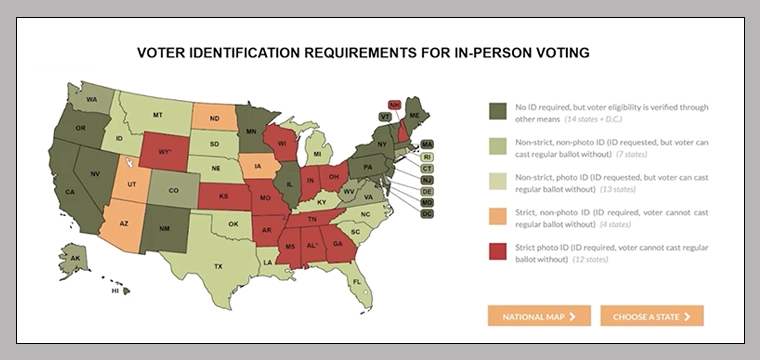
The access control landscape on college campuses is going through a rapid and profound transformation. Advances in innovative access technology are proving pivotal in bolstering campus security while enriching day-to-day experiences for students and staff alike. By understanding these five access trends, campus administrators can make informed, impactful decisions that shape a safer, more connected campus.
As security is increasingly top of mind on campuses, campus administrators are integrating more technology, like surveillance cameras and video management systems, to provide higher levels of visibility and protection. Along with these precautions, access control systems can play a valuable role in helping to layer security on campus to keep everyone safe.
At the core of modern campus security lies the need to balance robust security protocols with convenience and openness. Traditionally, campuses have been open communities where students, staff and even visitors can access the grounds and spaces with keys, plastic cards or fobs. While secure, these methods can be inconvenient, creating user frustration and bottlenecks during events.
To be clear, digital transformation in access control systems is more than an upgrade — it's a paradigm shift. By integrating advanced technologies, campuses can achieve the right balance between security and convenience to create smarter, more connected — and open — campuses.
Digital transformation helps campus officials strike the balance between security and convenience by shifting from traditional physical credentials to more sophisticated, digitally-powered access solutions.
Mobile credentials are at the forefront of this shift, allowing secure access through devices — like smartphones and smart watches — that users already carry. Mobile access has become a standard expectation on campus, and this includes the ability to control access through mobile devices. The technology allows students, staff and visitors to seamlessly access buildings, rooms and amenities with a swipe or tap while reducing the risk of unauthorized use via lost or stolen cards.
Another digital tool — a cloud-based access management platform — simplifies and supports access operations while increasing visibility, control and security. Likewise, cloud-based technology allows security teams to leverage cloud hosting to quickly and efficiently provision and deprovision mobile identities, while reducing the need for physical locations previously used for card printing and distribution.
Momentum toward mobile identity use is building, and as a result, organizations are steadily upgrading older hardware with multi-tech readers able to recognize both physical cards and mobile credentials, according to HID’s 2024 State of Security and Identity report. As mobile access becomes more common, legacy hardware can no longer support new technologies effectively.
Upgrading legacy panels and locks also helps future-proof campus security, ensuring compatibility with existing infrastructure and new technologies while providing flexibility to incorporate future access control advancements.
A key factor in upgrading hardware is interoperability, or the ability of a component — like a reader — to exchange information with various credential types, from RFID cards to mobile. The capacity for different components and even systems to communicate seamlessly reduces the potential for information silos, streamlining security management and response strategies. This ensures a flexible security infrastructure that is also future-proof.
In addition, interoperability gives administrators a more holistic view of campus access, supporting more informed decision-making and facilitating a proactive approach to threat identification and mitigation. It elevates the level of security on campus while significantly enhancing the user experience by accommodating the convenience of various access methods.
Another trend driving mobile adoption is the increasing popularity of hybrid working models among campus staff. Models that blend remote and on-campus work require access technology that can adapt to varying access needs. As a result, access control systems must be dynamic and flexible enough to accommodate different levels of access based on factors like time, location and role.
Traditionally, access control has been siloed in the campus environment, with decisions handled by one department, often security. Now that credentials can power so much of a campus — from libraries to cafeterias to recreation centers — access control is becoming central to building a holistic student experience. As a result, upgrading access control requires input from all stakeholders, including decision-makers from human resources, libraries, housing, security, IT and more.
Cementing the credential’s place as central to campus life requires full support and endorsement from senior leadership. Campus administrators can facilitate this journey by helping leaders fully understand the value of an advanced access solution across the campus ecosystem. For example, along with improving student experience, strengthening security and streamlining operations, it enhances sustainability by decreasing plastic card use and reducing the footprint of credentialing offices.
Even as mobile technology becomes increasingly prevalent, other technologies are on the horizon. Biometrics — particularly facial and fingerprint recognition — eliminate the risk of lost or stolen cards or credentials. They also make access to campus property and amenities a virtually effortless experience for students and staff.
Ultra-wideband (UWB) technology represents another new frontier in campus access control. UWB provides a truly keyless and contactless entry experience, where lock is opened when an authorized device, like a smartphone, is within a defined physical proximity — granting access without the need to take out the device or press a button.
As college campuses navigate the complexities of modern security, it’s essential for administrators to consider the integration of advanced technologies and the strategic upgrade of access control systems. By understanding these trends, decision-makers can drive meaningful changes that create safer, more connected campuses and enhance the day-to-day experiences of students and staff.
Author: Tim Nyblom, Director, End User Business Development, Higher Education, HID




